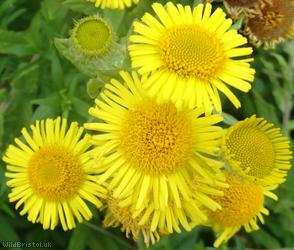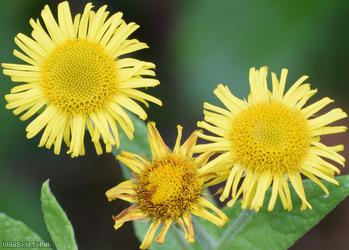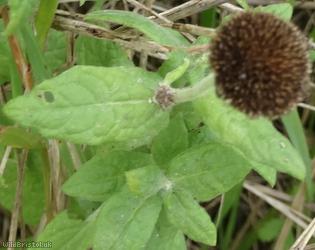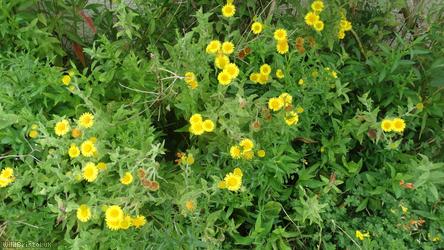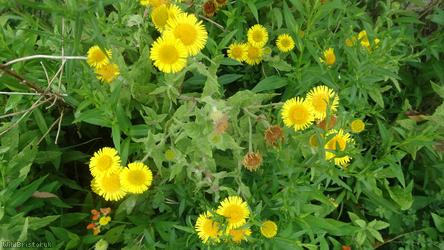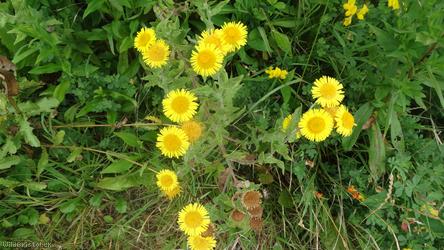Common Fleabane - Pulicaria dysenterica
Favourite Photos
Species Description
Common and widespread on preffered habitat throughout the Southern half of the UK. Scarce elsewhere. Habitats include: Damp habitats e.g. water margins, wet ditches, marshes, wet meadows, road side verges .Other names include: Camels, harvest flower, Job's tears, mare's fat, pig-daisy, meadow false fleabane (in America). carbolic soap and chrysanthemum, is an insect repellent. In the past it was kept in houses specifically for the purpose of driving away fleas. Bunches were dried and burned as a fumigant or hung in rooms. Perennial stoloniferous plant. Flowers August to September. In the Lane location it usually starts to flower at the end of July. Yellow flower 15-30mm in diameter. Family= Composite/Asteracea.
